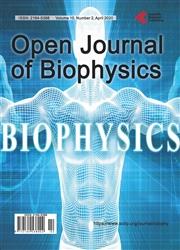Histomorphological Changes in the Skin and Eye Induced by Sub-Chronic Exposure of Wistar Rats to 3G Cell Phone Radiation
引用次数: 0
Abstract
The effects of electromagnetic radiation produced by a 3G cell phone (third-generation) on skin tissues and eyes were investigated in terms of histomorphological parameters. A total of 26 Wistar rats (2 weeks-old, each weighing 40 g at the time of experiment) were used. They were maintained under a control room with water and food continuously available. The animals were divided into two experimental groups: Group A (Exposed) and Group B (Control), each with 13 Wistar Rats kept inside a plexi cage. Group A was exposed to a 3G cell phone radiation while Group B the control group, was not. All animals were generally anesthetized with Ketamine injection and then decapitated. The skin tissue was excised from the dorsal area and eyes samples were taken from all the rats by enucleating of the eye balls, fixed in 10% neutral buffered formalin for a minimum of 72 hours before processing through a graded alcohol and xylene was used as a clearing agent, embedded in paraffin blocks. Tissues were sectioned at 5μm thick and routinely stained with hematoxylin/eosin. Mounted slides were examined and photographed using a light microscope. Mild to severe orthokeratotic parakeratosis was observed in the skin while eye revealed loss of striation in the sclera with necrosis of the layers of rods and cones in the retina of the exposed group. We conclude that sub chronic exposure to 3G cell phone radiation impaired the protective ability of the skin and also impaired accommodation.3G手机亚慢性辐射对Wistar大鼠皮肤和眼睛组织形态学的影响
从组织形态学的角度研究了3G手机产生的电磁辐射对皮肤组织和眼睛的影响。选用2周龄Wistar大鼠26只,实验时每只体重40 g。他们被关在一个控制室里,有水和食物持续供应。实验动物分为两个实验组:A组(暴露组)和B组(对照组),每组13只Wistar大鼠饲养于plexi笼中。A组暴露在3G手机辐射下,而B组作为对照组则没有。所有动物用氯胺酮注射全身麻醉后斩首。从背部切除皮肤组织,所有大鼠的眼睛样本通过眼球去核,在10%中性缓冲福尔马林中固定至少72小时,然后通过分级酒精处理,二甲苯作为清除剂,包埋在石蜡块中。取5μm厚组织切片,苏木精/伊红常规染色。用光学显微镜检查和拍摄载玻片。暴露组皮肤出现轻度至重度角化不全,眼部巩膜条纹消失,视网膜杆状和锥体层坏死。我们的结论是,亚慢性暴露于3G手机辐射会损害皮肤的保护能力,也会损害适应性。
本文章由计算机程序翻译,如有差异,请以英文原文为准。
求助全文
约1分钟内获得全文
求助全文

 求助内容:
求助内容: 应助结果提醒方式:
应助结果提醒方式:


